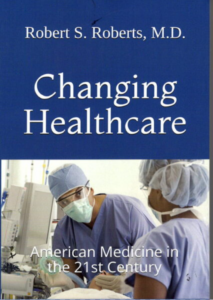
I’m a white Anglo-Saxon Protestant but I don’t care one bit about the race, religion, or ethnicity of my doctor when my life is on the line. I just want the most qualified physician making life and death decisions for me. I think most people feel the same.
When I was in medical school, we had minority students from every racial background imaginable, but some of them never made the grade. About 25% of all medical students in the first-year class never graduate – and many of them come from these minorities. Perhaps they were disadvantaged in their earlier educational experience, but they just couldn’t keep up with the extreme demands of medical school.
The Wall Street Journal editorial board tells us the Supreme Court banned racial preferences in university admissions, but finding ways to maintain them has become a cottage industry in higher education. Medical schools are among the frequent offenders, and a new report shows how schools have maintained different standards for applicants depending on their race.
Do No Harm, a group that studies preferences in medicine, submitted a Freedom of Information Act request to 93 public medical schools for 2024 admissions data on race, undergraduate GPA, Medical College Admission Test (MCAT) scores, and whether or not the applicant was admitted. Twenty-three schools have responded so far, and the data suggests racial preferences are still going strong.
At the responding schools, admitted black applicants had lower MCAT scores than admitted white and Asian applicants at 22 out of 23 schools. Admitted Asian students had a mean MCAT score of 514, approximately the 88th percentile. Admitted black students had a mean score of 508.3, approximately the 73rd percentile. The delta also existed for comparative GPAs among the groups.
After the Justices ended racial preferences in Students for Fair Admissions (SFFA) v. Harvard in June 2023, the Association of American Medical Colleges said it was “deeply disappointed” in the Court’s decision and that “racial and ethnic diversity in educational settings” provided “critical benefits” and a way to address health inequities. Schools have been looking for ways around the Court ever since.
In the admissions cycles since 2023, little has changed. At many universities, demographic data of admitted students has held steady and in some cases the share of “underrepresented” minorities has increased. Data from 34 schools shows that the racial composition of medical schools hasn’t changed much since the Supreme Court’s decision.
The report by Ian Kingsbury and Naomi Risch concedes that “qualities like empathy and strong interpersonal skills matter when it comes to excellence in medicine,” but they don’t substitute for medical and scientific aptitude. Preferences that elevate less qualified doctors won’t reduce inequities in public health, but they will stigmatize successful minority applicants who excel. Oh, and to remind, racial preferences are against the law.
Medical schools are not doing these students, or their potential future patients, any favors by promoting unqualified applicants. Either the students will experience failure in their medical school experience or their future patients will experience less than adequate medical expertise from their underqualified doctors. Neither situation should be allowed to happen.
Imagine wondering if your doctor only got into medical school because of racial preferences! Furthermore, these racial preference practices undermine the credibility and reputations of highly qualified minority physicians. They deserve better.

